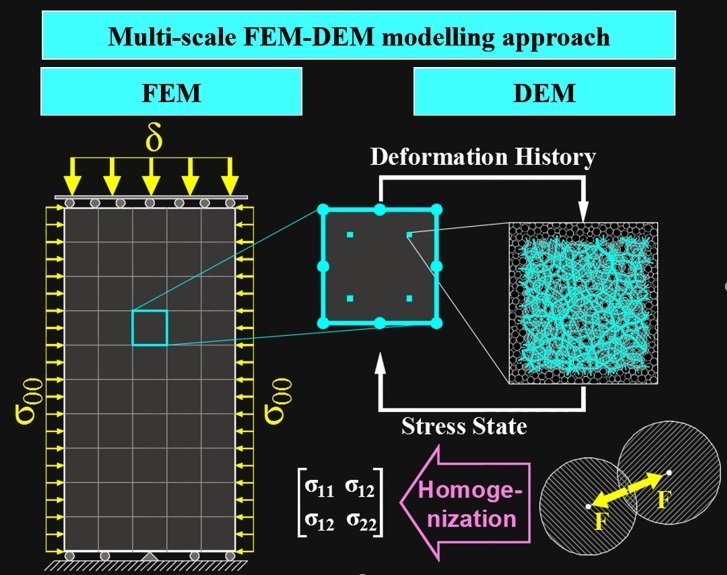Main PUBLICATIONS
Physical investigations based on in-situ x-ray tomography of grain-scale processes (grain-breakage and contact frictional sliding) conducive for yielding and compaction localization in sand deformed in the ductile regime
Read MoreBased on x-ray tomography and x-ray diffraction measurements of stress and strain in granular systems, this fundamental study of the transition from heterogeneous to homogenous scale reveals scales hierarchy in geometry, stress and energy dissipation
Read MoreTechnical paper reporting, with demonstrations, features of a new load-frame designed by the Authors and installed at Johns Hopkins University to test geomaterials under high pressures with the aid of in-house and synchrotron x-ray tomography.
Read MoreNumerical investigations into the origin, causes, and sequences of complex compaction band structures in the dessert of Utah, combining geological history, field stratigraphy, material theories, and finite element computations.
Read MoreLaboratory investigation combined with theoretical developments to explain the divergent anisotropic responses in yielding-stresses and post-yielding deformation in the highly porous rock of Maastricht Tuffeau.
Read MoreThe role of boundary effects in promoting heterogeneous deformation fields is assessed in the context of examining the bias that boundary friction could introduce on the characterization of compaction localization in predominantly softening and hardening porous rocks.
Read MoreThe natural heterogeneity of porous rocks is integrated in numerical simulations to quantify its interplay with interfering boundary effects in the context of the triggering and the propagation of compaction band.
Read MoreStudies of the role played by spatial heterogeneities in triggering delayed compaction bands under moderated levels of creep stress.
Read MoreIllustration of elastoplastic modeling and validation of compaction banding in a highly-porous limestone tested mechanically in concurrence with in-situ x-ray computed tomography.
Read MoreConstitutive modeling and theoretical developments of instability indices for compaction creep in porous rocks susceptible to strain localization, and the example here is: Bleurswiller sandstone.
Read MoreThe theory of geostatistics is used to assess through metrics the intensity of spatial heterogeneity in granular systems subjected to chemically-induced mineral precipitation.
Read MoreWithin the framework of Multiscale modeling of FEMxDEM, this work examines the effects of incorporating spatially varying simulations of granular assemblies on the modes of strain localization.
Read More










